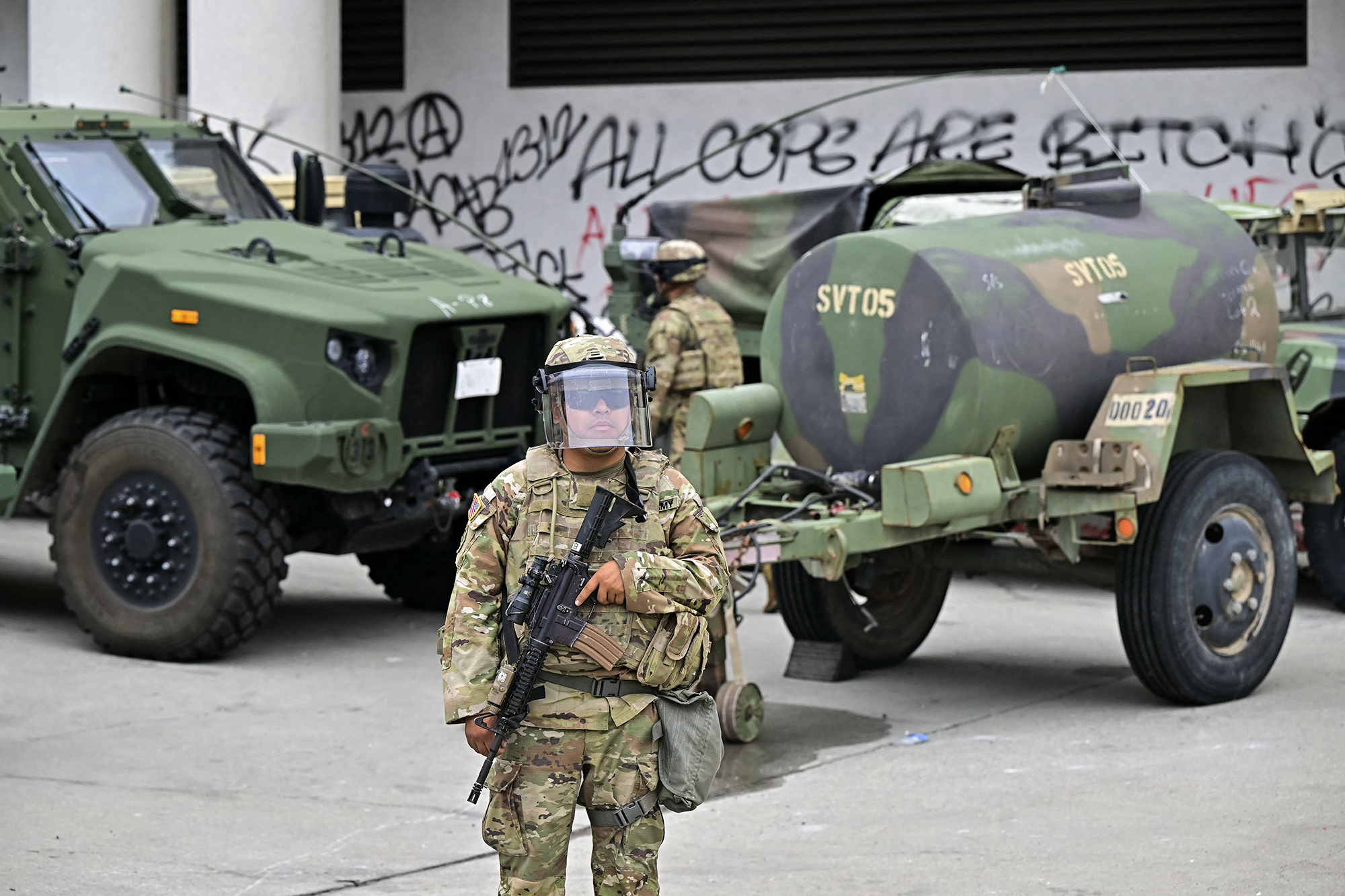Half of Assigned National Guard Troops to End Deployment in LA
On June 14, 2025, soldiers from the California National Guard’s 1st Battalion, 185th Infantry Regiment, 79th Infantry Brigade Combat Team stood watch over a building in Downtown Los Angeles. After over a month of service, the announcement of a significant reduction in federal duty has arrived for 2,000 of these National Guard troops. The Department of Defense disclosed this information on Tuesday, confirming that these soldiers, which represent approximately half of the total National Guard troops assigned to secure federal agents and property post-protests, will have their deployment concluded ahead of schedule.
Those returning from federal supervision belong to the 79th Infantry Brigade Combat Team of the California National Guard. However, as clear as this announcement might sound, the specific criterion or milestone leading to this early release remains undisclosed. A corresponding number of National Guard troops, primarily from the 49th Military Police Brigade, is to stay under federal command and continue being stationed in the area.
The demobilization timeline and the departure of soldiers from the 79th Infantry Brigade Combat Team out of Los Angeles remains uncertain. Protocols and procedures following the completion of their duty are yet to be shared publicly. The demonstrations that prompted this large-scale deployment began on June 6, following federal immigration raids. In response to the protests, federal officers deployed less-lethal rounds.
Subsequent to the protests, President Donald Trump invoked Title 10 of the U.S. Code, putting California National Guard troops under federal jurisdiction. Shortly after this announcement, a transfer order from the Pentagon was initiated, tasking 2,000 soldiers from the 79th Infantry Brigade Combat Team to proceed to Los Angeles. These soldiers, with a mandate capped at 60 days, officially began their deployment on June 9.
The resolution to dispatch federal troops to Los Angeles was met with opposition from local and state officials, as well as police leadership at a municipal level. These groups argued that the deployment was an overreaction, citing the nature of the protests as being generally peaceful. Among those voicing concern was California Governor Gavin Newsom, who urged for the return of the remaining troops.
Simultaneously, Newsom has launched a legal challenge against the federalization of the troops. Among the federalized National Guard units, some were assigned to aid Immigration and Customs Enforcement, alongside other Department of Homeland Security (DHS) agents, in various immigration operations throughout Southern California.
In addition to Los Angeles, National Guard soldiers have also been present at several immigration raids in Carpinteria. Unfortunately, an incident occurred where an individual sustained injuries and subsequently passed away. High presence patrols have also taken place at MacArthur Park in Los Angeles, along with drug raids, up to 136 miles away from Downtown Los Angeles.
The extent and geographical scope of the task force’s operations are not limited by Southern California. So indicated the Northern Command, seemingly implying that activities may span to regions beyond. Earlier this month, the Northern Command facilitated the release of 150 National Guard troops.
Among the soldiers released were a significant number who are part of the California National Guard’s firefighting operations. The division of duties among National Guard troops, varying from assisting immigration operations to backstopping firefighting missions, showcases the diverse roles these units are often called upon to fulfill.
The legal challenge raised by Governor Newsom against the federalization of the troops is set to proceed to trial soon. The courtroom showdown, focused on the question of federal versus state authority, is scheduled to commence on August 11. The outcome of this trial is eagerly anticipated, as it could potentially set a precedent for future cases of federal troop deployment.
This detailed series of events underscores the nuanced debate surrounding the use of National Guard troops. The deployment and operationalization of these troops often intersect with broader discussions about federal and state jurisdictions. It also highlights the different perspectives on how best to respond to civil unrest and maintain public order.
In totality, the situation underscores the balancing act that authorities must navigate between ensuring public safety and preserving civil liberties. Debates about the most effective scale of military involvement in domestic affairs are not new, but critical incidents such as these re-ignite these discussions.
In conclusion, the early release of some National Guard troops in California provides some relief, yet the precise criteria and future plans remain opaque. As legal proceedings continue, clarity on the role of the troops and the extent of federal intervention is eagerly awaited. With different adversities at hand, it becomes imperative to continuously explore and define the appropriate application and jurisdiction of National Guard resources.


